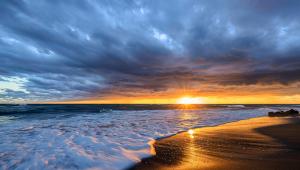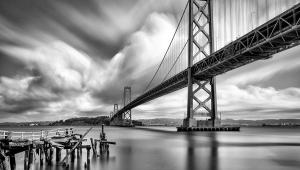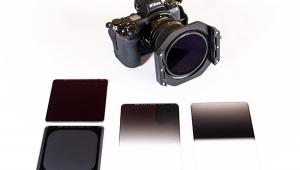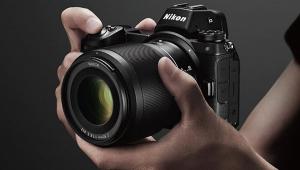How to Shoot Long Exposures: Tips for Revealing the Invisible in Your Images
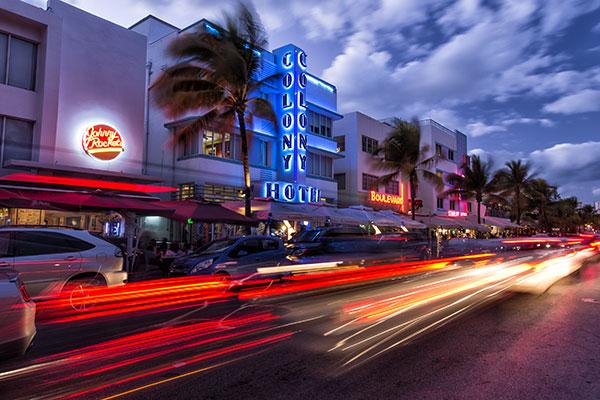
Want to see something you don’t see every day—something, in fact, you can’t really see at all?
I’m talking about the passage of time—well, really the cumulative effect of what’s happening over time—captured in one image. Long exposures will allow you to do that. They can be comparatively long—a half second rather than, say, 1/125 or 1/250 second—or really long; one of the photos here took five-and-a-half minutes.
Here’s how it works.
I start by visualizing what’s likely to happen in the scene over a period of time. I have to take into account several things when I compose the shot. Depending on the scene and the situation, that could be the speed of clouds moving across the sky, the flow of water in a stream, the rush of waves to the shore. Then I set up my camera and tripod to capture what I imagine, or expect, will take place.

My first step is to meter the scene and take a properly exposed image based on the depth of field I want for the image. I usually go for a lot of depth of field, so my f/stops for this type of photography are generally in the f/11 to f/22 range.
Once I’ve got that ideal-exposure test shot, I decide what Neutral Density (ND) filter I’ll need to use, and I usually need to use one for a long-exposure image because the length of the exposure is going to let in a lot of light—so much light that there’s a good chance the image will be blown out no matter how small an f/stop I’ve chosen.
I carry three types of ND filters: fixed, which are rated in density stops of five to 15; variable, which rotate to add or subtract density; and graduated, which provide degrees of density over half the filter while the other half is clear. Knowing which ND filter to use comes down to experience in judging the strength of a scene’s light and the ND filter’s effect. The selection also takes into account the look I want.
You can use the examples of the accompanying photos to get an idea of the effects of various ND filters and the lengths of the exposures that produced the images.
The rest is easy. I enter the shutter speed of the properly exposed image and the strength of the ND filter I want to use in an iPhone app called NDTimer. The app calculates the amount of time the shutter needs to stay open, counts it down, and sounds an alert when the time is up.
The key things to remember: be sure your lens is set on manual focus; retain the f/stop and ISO of your correct-exposure test shot; use a cable release to open and close the shutter; either slip on your camera’s viewfinder cap or use the built-in viewfinder curtain to prevent stray light from leaking in during the long exposures; and lock the mirror up for exposures of several seconds or more.


The Variables
Long-exposure images are a favorite of mine—they’re expressive, dramatic, creative, and give travel images a decidedly different look from the photos that most people will bring back from their trips. They are also an intriguing blend of art, craft, and imagination.
But despite all the experience that you, or I, may bring to them, they are not a sure thing. There will be times when the wind shifts and the clouds start to veer from the path you imagined they’d take across the sky. Or the wind picks up, or dies down. Or the light fades faster than you thought it would. 
You can make adjustments, of course, and keep the shutter open longer or close it sooner than the app-calculated time indicates. Clouds changing direction? Not much you can do about that except go with it and hope to be pleasantly surprised. Usually I’ll get clued in to wind direction changes during the setup for my test shot, and I react quickly to recompose.
Sometimes an ND filter isn’t needed at all—a color filter or a polarizer will hold back the light, and sometimes low light will be just enough light.

You don’t have to travel far to capture time in long-exposure images—most of the photos here were taken close to my home. But if you’re traveling to new places, exotic locations and have iconic, dramatic backgrounds offered up, these are the kinds of pictures you really want to get.
A primary driver of my photography is to convey a sense of time passing in expressive, creative images. A frozen-in-time photo is a photo of exactly what happened in one instant, but if you control time, you have a much more dramatic, interpretive, and artistic image.
A selection of Deborah Sandidge’s world photography, including long-exposure images, is at deborahsandidge.com, along with cinemagraphs, photo tips, and a schedule of upcoming workshops, photo tours, and seminars.
- Log in or register to post comments
